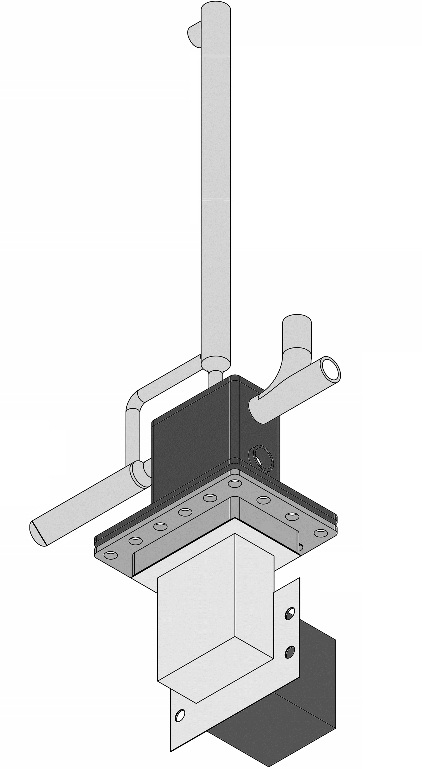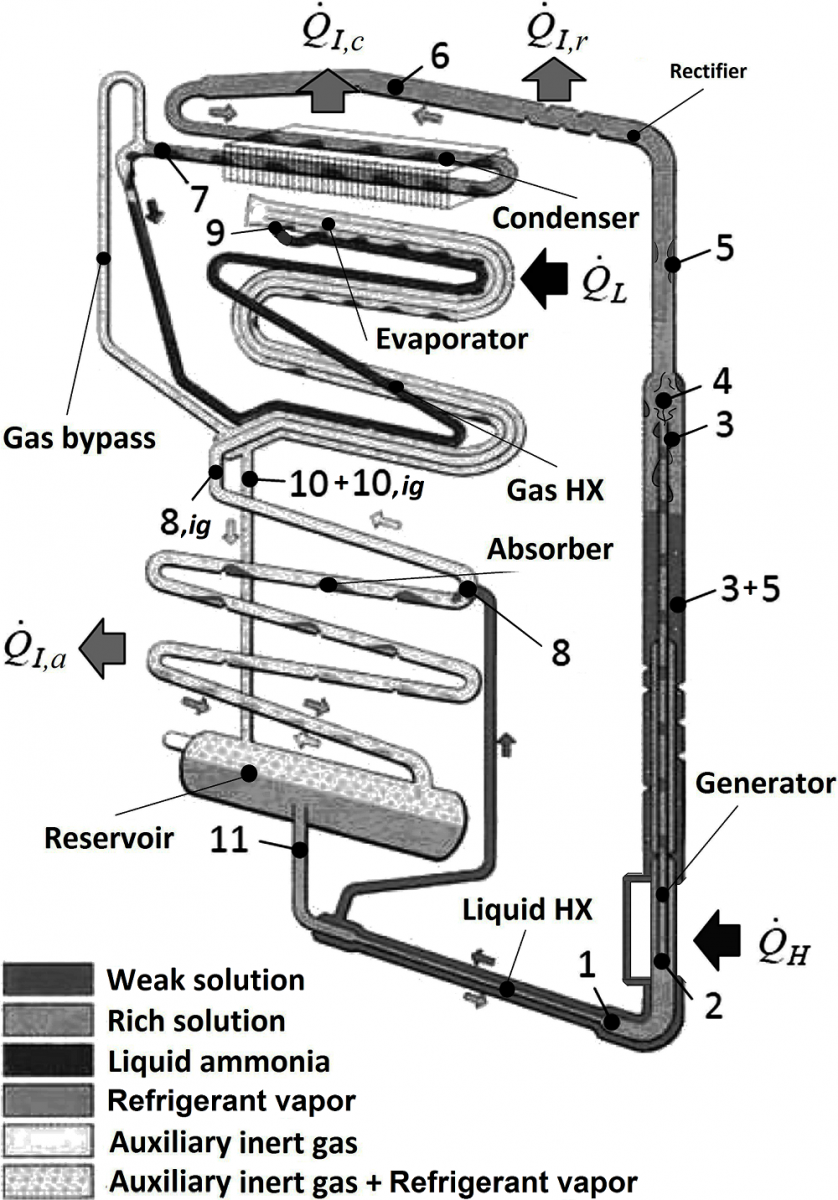DAR
 An enhanced model for the design of Diffusion Absorption Refrigerators
An enhanced model for the design of Diffusion Absorption Refrigerators
( International Journal of Refrigeration - Elsevier UK 2013 )
http://dx.doi.org/10.1016/j.ijrefrig.2013.02.016,
Abstract
A steady state description of the thermal pump driving the Diffusion Absorption Refrigerator was integrated in the model previously proposed by the same authors. The thermal pump allows the DAR cycle to be activated, moving the strong mixture and separating the refrigerant from the weak one. So, the design parameters play a primary role in the DAR cycle performance in terms of COP. The enhanced model results were validated on a prototype built coupling a domestic 750 W-magnetron on a small purposely modified commercial DAR to activate the thermal pump. A maximum mismatch of 2.32% in the weak mixture mass flow rate and lower than 5% in COP between the predicted and measured data were found. The microwaves activated thermal pump produced a distinct reduction in the starting transient time of the refrigerator and for this reason it can be proposed as a valid candidate to be used as a
rapid cooler in small refrigeration applications.
An advanced analytical model of the Diffusion Absorption
Refrigerator cycle

Abstract
The results about the performance of a new DAR’s thermodynamic model are compared with the predictions of Zohar et al. (2009). The main difference is due to an accurate modeling of the refrigerant composition, assumed there as pure ammonia. A sensitivity analysis shows that, as the generator temperature increases, the rich solution mass flowrate reduces more than that of the refrigerant one, and COP decreases. This happens as the absorption temperature increases as well, due to the lower absorption of ammonia in the weak solution. COP was found to increase when the ammonia concentration decreases. In addition, for lower heat fluxes supplied to the generator, the heat dissipation toward ambient dominates and COP becomes small; when the heat flux overtakes a threshold, the evaporator reaches its maximum heat transfer, that remains constant for any further increase of heat supplied. COP presents its highest values over a limited range of the generator’s operating conditions.
rapid cooler in small refrigeration applications.
An advanced analytical model of the Diffusion Absorption
Refrigerator cycle

(International Journal of Refrigeration - Elsevier UK 2012) -http://dx.doi.org/10.1016/j.ijrefrig.2011.11.007
Giuseppe Starace, Lorenzo De Pascalis
Abstract
The results about the performance of a new DAR’s thermodynamic model are compared with the predictions of Zohar et al. (2009). The main difference is due to an accurate modeling of the refrigerant composition, assumed there as pure ammonia. A sensitivity analysis shows that, as the generator temperature increases, the rich solution mass flowrate reduces more than that of the refrigerant one, and COP decreases. This happens as the absorption temperature increases as well, due to the lower absorption of ammonia in the weak solution. COP was found to increase when the ammonia concentration decreases. In addition, for lower heat fluxes supplied to the generator, the heat dissipation toward ambient dominates and COP becomes small; when the heat flux overtakes a threshold, the evaporator reaches its maximum heat transfer, that remains constant for any further increase of heat supplied. COP presents its highest values over a limited range of the generator’s operating conditions.
